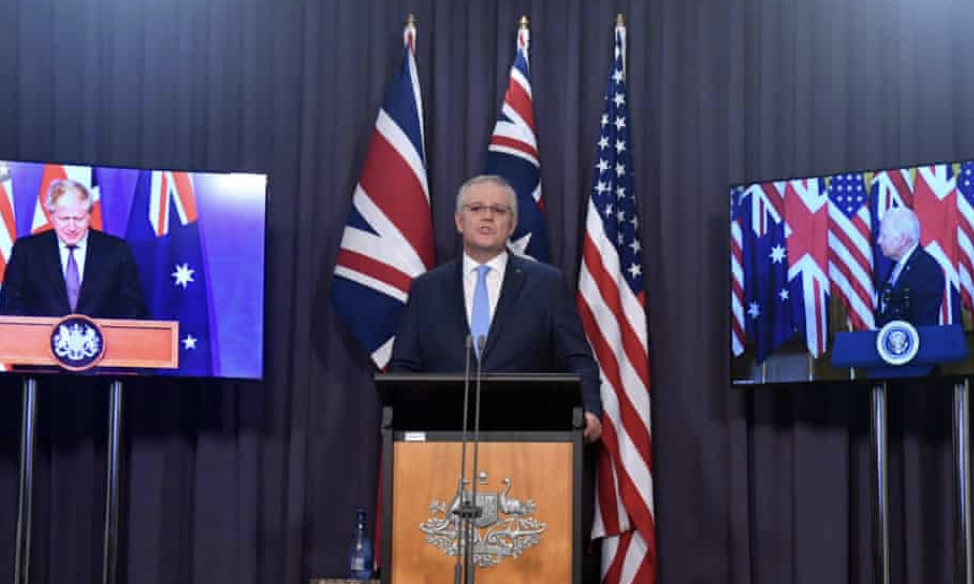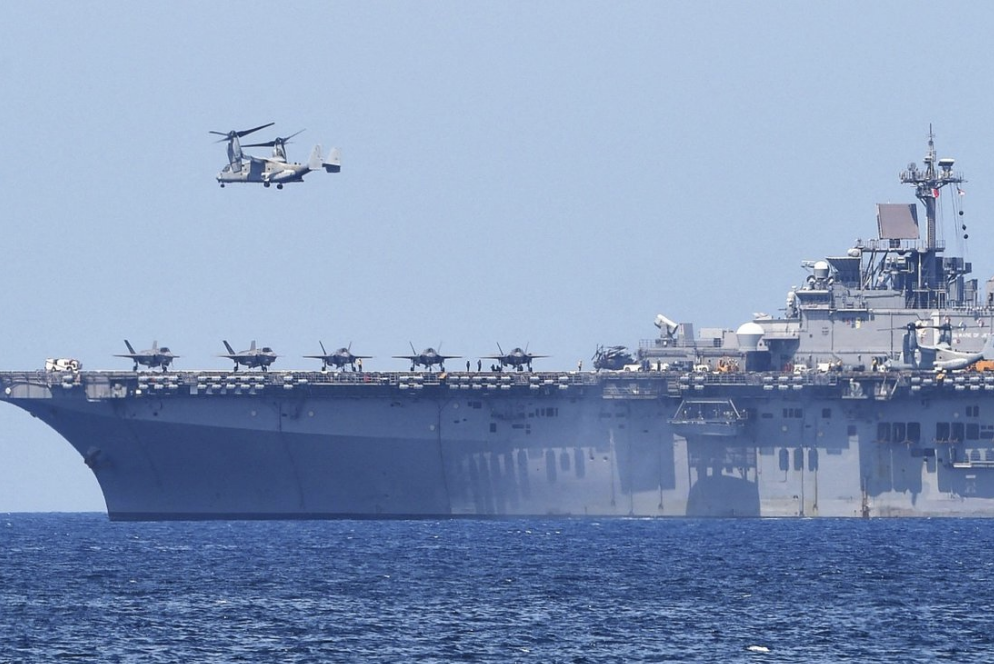What do rising tensions in the Asia-Pacific mean for China?
Tensions in the Asia-Pacific region continued to rise after AUKUS members released a joint statement noting their intentions to develop hypersonic weapons. AUKUS, which is a strategic alliance between Australia, the U.K., and the U.S., was formed in September of 2021. Since its inception, its members have cooperated on several fronts, including cyber, artificial intelligence, quantum technology, and even undersea robots.
This most recent announcement garnered harsh criticism and opposition from China, which went so far as to accuse AUKUS of forming an Asian-Pacific version of NATO. Zhao Lijian, Chinese Foreign Ministry spokesperson, stated that the agreement will “undermine peace and stability in the Asia-Pacific region.”
Leaders of the AUKUS agreement meet for a joint press conference. Photo: Mick Tsikas / EPA
China sees the AUKUS agreement, as well as other activity in the region by the U.S. and its allies, as provocations and a direct threat to its regional prowess. In response to the formation of AUKUS last year, Beijing officials condemned all three countries for exhibiting an “obsolete cold war zero sum mentality and narrow-minded geopolitical concepts.” Last week, pressures increased again following reports that the alliance had extended an invitation to Japan. Top officials of the US and Japan swifty denied the reports however, claiming that they were completely inaccurate.
AUKUS countries will not be the first or last to assert military and political capabilities in the region. China became the first country to build a post-Cold War military base in the Asia-Pacific in the early 2000s. The base was located on Hainan Island at the edge of the South China Sea, whose waters have become an arena for territorial ambitions.
In March, the U.S. increased activity in the South China Sea, nearly doubling its exercises involving carrier groups. Beijing saw this move as an explicit contradiction to President Biden’s pledge of non-confrontation.
By the late 2010s, China had constructed several artificial islands and additional military bases, outfitted with monitoring equipment, intelligence collection gear, radars, and maritime weapons.
Although analysts initially regarded Chinese activity in the region as part of preparations for an eventual military takeover of Taiwan, it has become increasingly clear that Beijing has wider regional aspirations.
Since the early 2000s, reliance on the U.S. as a security guarantor in the Asia-Pacific has decreased, prompting new countries to step up in its place.
A helicopter taking off from the USS Wasp in an exercise in the South China Sea. Photo: South China Morning Post / AFP
A leaked security draft agreement between China and the Solomon Islands that circulated last month raised concerns about China’s increasing dominance as a security guarantor. The proposed agreement would grant China a range of strategic assets on the islands, including the ability for China’s navy to dock warships.
Western allies also reacted strongly to this alliance in light of the Solomon Islands cutting ties with Taiwan in September of 2019. A U.S. State Department spokesperson stated that “Signing such an agreement could increase destabilization within the Solomon Islands and will set a concerning precedent for the wider Pacific Island region.”
This week, the White House Indo-Pacific Coordinator Kurt Campbell and the State Department’s top official for Asia will travel to the Solomon Islands, amid concerns that the island’s prime minister, Manasseh Sogavare, is moving closer to Beijing. The White House has expressed that it wants Southeast Asian countries to understand the benefits of cooperating with Washington on security matters, and the topic of Chinese security influence will be one of the primary subjects in meetings.


